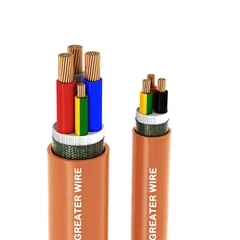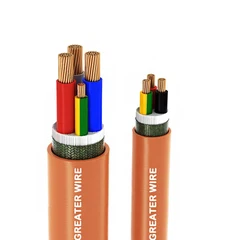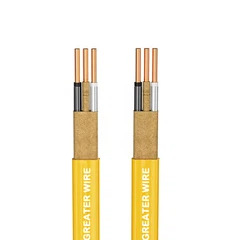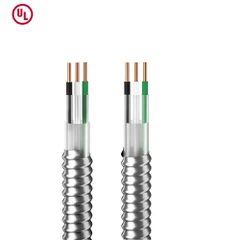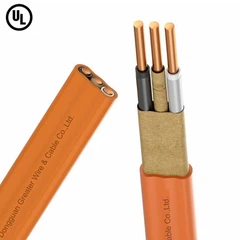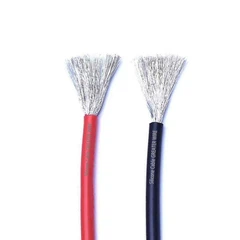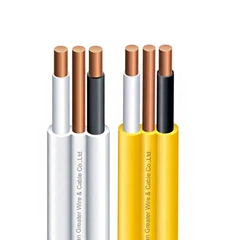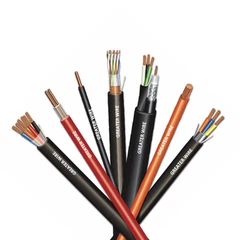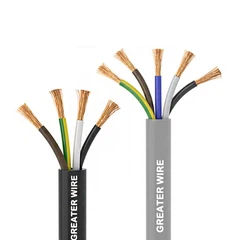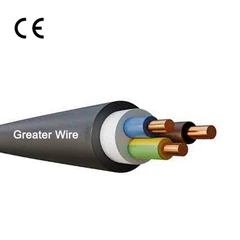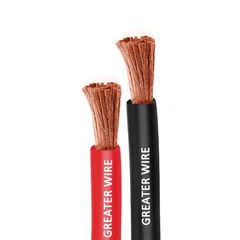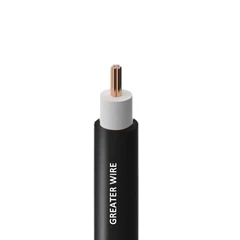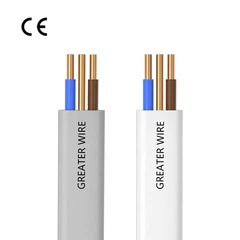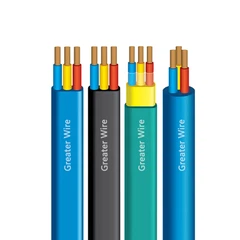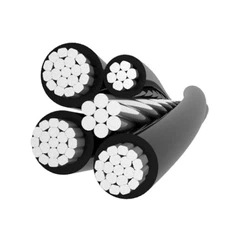When you hold a cable in your hand, it may look simple - just a piece of wire covered in insulation. But do you really know if it's carrying alternating current (AC) or direct current (DC)?
Using the wrong cable type can lead to equipment failure, safety hazards, power loss, and even costly downtime.
Have you ever wondered:
Is this solar panel cable transmitting AC or DC?
Can I replace this DC power wire with a regular household AC cord?
How can I quickly test and confirm the cable type?
In this guide, we'll walk you through everything you need to know about how to tell whether a cable is AC or DC, highlight the differences between the two, share common mistakes, and provide expert tips on choosing the right cable.
Finally, we'll introduce how Dongguan Greater Wire & Cable Co., Ltd. and our AC90 series products can help you achieve safer, more efficient, and cost-effective wiring solutions.
What Is an AC Cable and a DC Cable?
Before identifying them, let's first define what each type means.
AC Cable (Alternating Current Cable)
An AC cable is designed to transmit alternating current-electric current that periodically reverses direction and varies in amplitude according to the system frequency (commonly 50 Hz or 60 Hz).
- Typical applications: household power grids, industrial machinery, HVAC systems, lighting, and wall outlets.
AC cables often require specific design considerations such as insulation strength, shielding, grounding, and frequency performance.
DC Cable (Direct Current Cable)
A DC cable carries direct current, where the electric flow moves steadily in one direction and maintains a constant voltage level.
- Typical applications: battery connections, solar photovoltaic (PV) systems, electric vehicles, telecommunications power supplies, and electronic devices.
Simply put:
AC cables deliver alternating current; DC cables deliver constant direct current.
However, in practice, it's not always obvious by appearance - which is why we need a deeper look at their technical differences and identification methods.
Key Differences Between AC and DC Cables
Understanding the distinctions helps you make accurate decisions and avoid misuse.
| Aspect | AC Cable | DC Cable |
|---|---|---|
| Conductor & Structure | Often multi-core (three-phase or single-phase), with conductors designed to handle electromagnetic effects | Typically two-core (positive & negative) or single-pole, with a simpler structure |
| Electrical Characteristics | Subject to skin effect and inductive reactance at frequency, resulting in higher impedance | Carries only steady current, minimal loss, no frequency effects |
| Insulation Requirements | Must withstand changing voltage polarity and peaks; risk of partial discharge and corona | Constant electric field stress; simpler insulation requirement |
| Manufacturing Cost | More complex due to multi-layer insulation, shielding, and grounding | Simpler, usually lower cost |
| Transmission Efficiency | Suitable for high-voltage long-distance AC power distribution | Excellent for specific long-distance or low-voltage DC systems (e.g. HVDC, PV) |
| Typical Use Cases | Power grids, motors, buildings, industry | Solar panels, batteries, vehicles, telecom, electronics |
Example:
A DC cable generally has higher conduction efficiency over short distances, while an AC cable remains dominant for high-voltage transmission because of easy voltage transformation.

How to Tell If a Cable Is AC or DC
There are several practical ways to determine the type of cable you're dealing with.
Check the Cable Label or Marking
Most cables have printed information on the sheath - such as rated voltage, model, and application scope. Look for clues like:
- "AC 220V / 240V / 480V"
- "DC 12V / 24V / 1500V"
- "PV1-F DC" or "Solar DC Cable"
- Certification marks (UL, CE, TUV, PV Standard)
If the label includes "PV," "DC," or "Direct Current," it's for DC use.
If you see "AC" or voltage ratings like "0.6/1kV AC," it's for alternating current.
Tip: Some cables are dual-rated (AC/DC). Always verify the maximum rated voltage and frequency.
Examine the Connector Type
The connector often reveals the intended use:
- AC Cables: wall plugs, industrial three-phase connectors, IEC sockets, NEMA plugs.
- DC Cables: barrel-type DC plugs, USB connectors, MC4 connectors (solar), aviation connectors, automotive terminals.
If the connector is round with a clear positive/negative marking, it's likely DC.
If it's a flat prong or standard plug, it's probably AC.
Measure with a Multimeter or Oscilloscope
The most reliable method:
Safely connect the cable to its power source.
Use a multimeter to check voltage type:
- Stable, constant reading → DC
- Fluctuating or sinusoidal voltage → AC
Using an oscilloscope:
- Sinusoidal or periodic wave → AC
- Straight, flat line → DC
Always ensure safety: disconnect loads and avoid live-line measurement unless you're trained.
Observe the Application Environment
- Power outlets, motors, and HVAC systems → AC
- Solar panels, batteries, electronics, and LED drivers → DC
- In a PV system, solar panels to inverter = DC, inverter to grid = AC
Combining label, connector, test results, and usage environment will give you a confident, accurate identification.

Common Mistakes When Using AC and DC Cables
Even professionals sometimes misuse cables. Let's review frequent errors and their potential risks.
Using AC Cables in DC Systems (or Vice Versa)
This can cause:
- Insulation failure or partial discharge (due to voltage stress)
- Overheating or power loss from mismatched conductor design
- Noise or interference from improper shielding
- Regulatory non-compliance (many regions have specific DC cable standards)
Wrong Cable Size
Incorrect cross-sectional area causes:
- Excessive heat buildup
- Voltage drops across long runs
- Reduced lifespan and performance
Mismatched Connectors
Loose or incompatible connectors can lead to high contact resistance, poor conductivity, or even electrical arcing - especially in DC systems where polarity matters.
Poor Environmental Resistance
Using indoor-rated cable outdoors without UV protection or weather resistance can result in premature degradation, cracking, or corrosion.
Mixing AC and DC Lines in the Same Conduit
Running both together can create electromagnetic interference, reduce insulation life, and increase safety hazards.

Tips for Choosing the Right Cable
Now that you understand the differences, here's how to make a smart, professional selection.
Define Voltage, Current, and Power Needs
- Match the voltage rating to your system (12V / 24V / 48V / 1500V, etc.)
- Select appropriate wire gauge based on current load and distance
- Consider voltage drop and safety margin
Choose the Proper Insulation Material
- AC: select insulation with good frequency response and dielectric strength
- DC: ensure high DC withstand voltage and corona resistance
- Outdoor: UV-resistant, weatherproof, temperature- and corrosion-resistant materials
Match the Connector to the Cable and Application
- Verify rated voltage/current
- Ensure proper polarity, waterproofing, and mechanical strength
Look for Certification and Compliance
- Choose cables certified by UL, CE, RoHS, or TÜV
- Follow local or international electrical standards
- If dual usage is expected, choose Tri-rated or AC/DC compatible cables
Allow for Future Expansion
- Avoid undersizing
- Consider scalability for future system upgrades
- Choose durable, high-quality materials to extend lifespan
Why Choose Greater Wire's AC90 Series
At Dongguan Greater Wire & Cable Co., Ltd., we're proud to offer the AC90 series - a high-performance cable line engineered for both AC and DC applications.
Key Advantages:
- Wide Voltage Compatibility – Designed for stable performance in both AC and DC systems
- Superior Insulation – Withstands voltage stress, minimizing risk of discharge
- High-Purity Copper Conductors – Low resistance, low heat, high efficiency
- Excellent Durability – UV-resistant, weatherproof, flexible, and long-lasting
- Comprehensive Technical Support – We provide one-on-one consulting, custom solutions, and reliable after-sales service
Whether your project is large or small, we deliver complete service and technical support from pre-sales design to post-sales maintenance.
Contact Us
Dongguan Greater Wire & Cable Co., Ltd.
Tel / WhatsApp / WeChat: +86 135 1078 4550 / +86 136 6257 9592
Email: manager01@greaterwire.com

